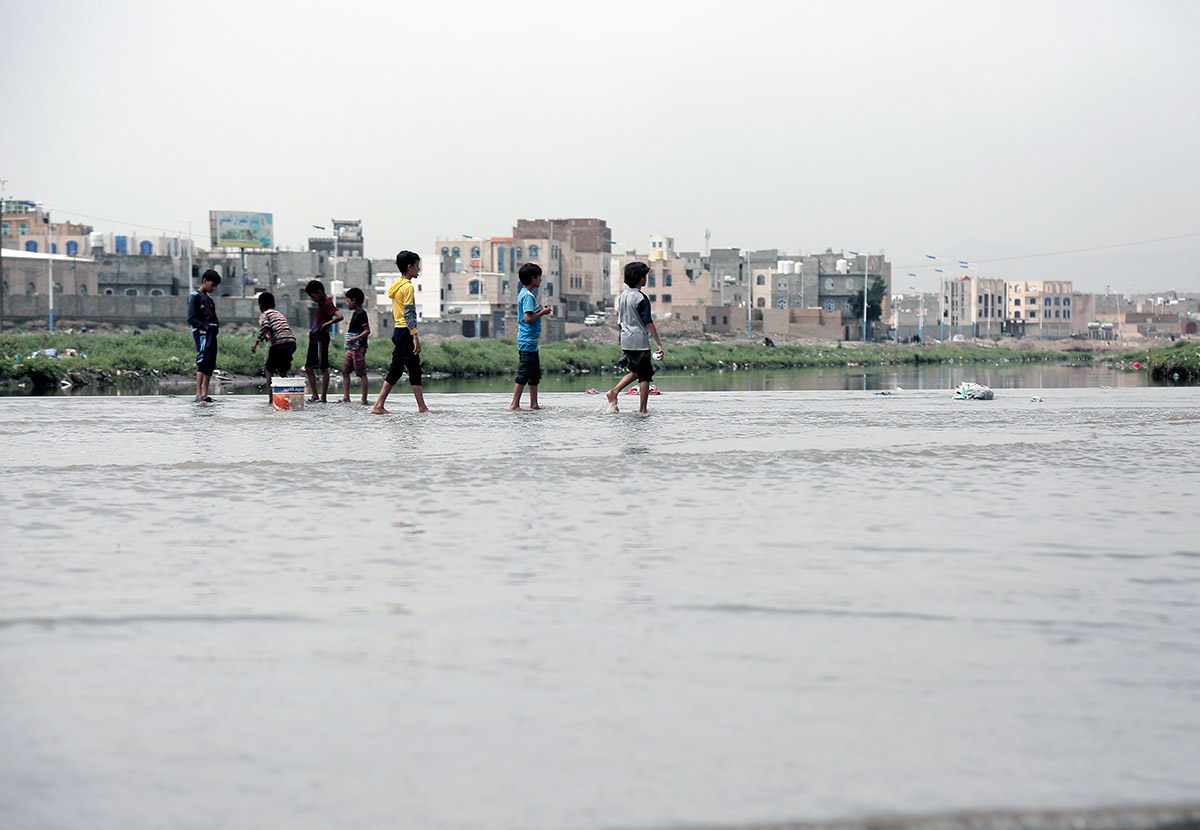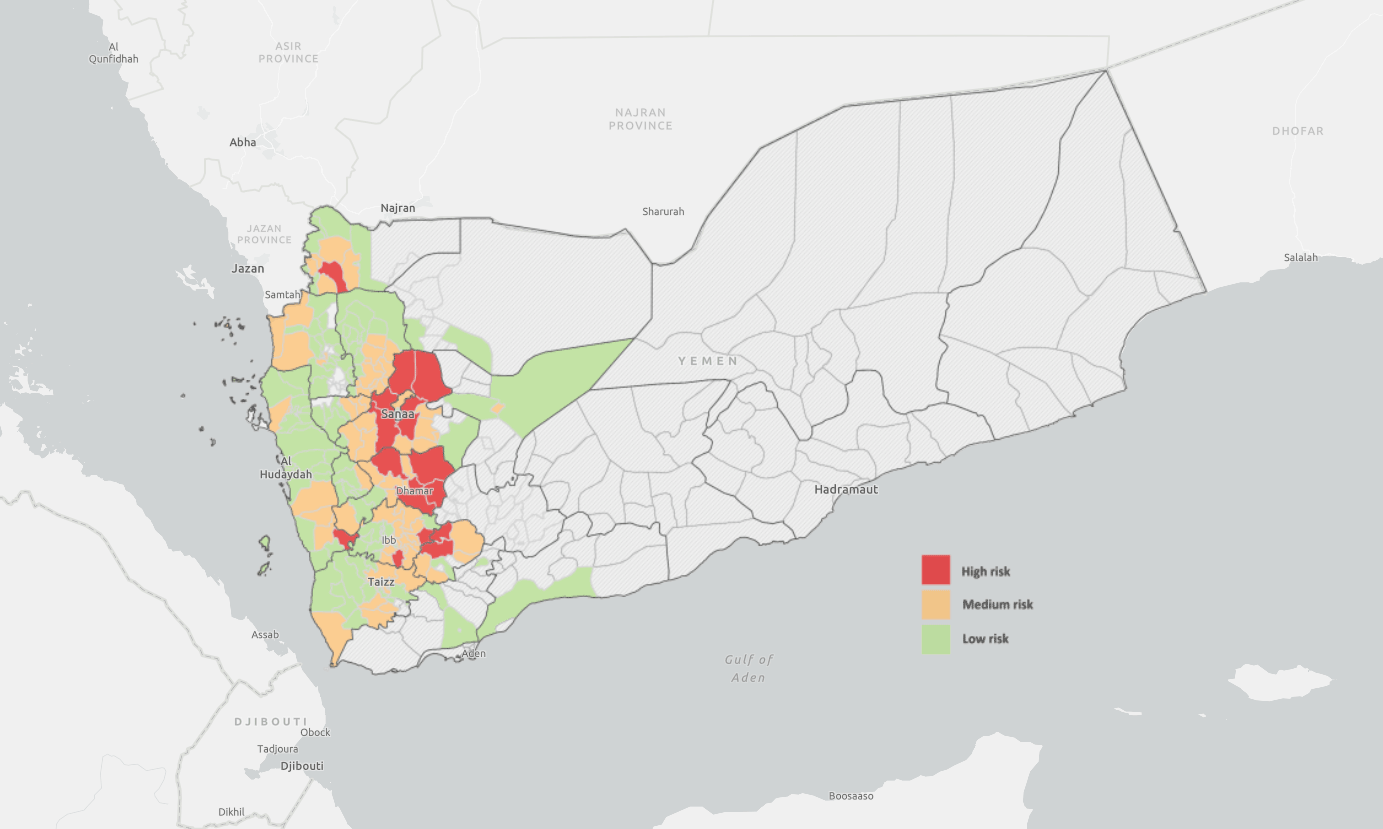In war-torn Yemen, torrential rains and flooding have destroyed homes and shelters
 6 August 2024: children in an area affected by heavy rainfall and severe flooding in Sana'a, Yemen. Photo credit: Mohammed Hamoud/Getty Images.26 August 2024, Sana’a, Yemen – Yemen’s skies have never been so capricious. Late last month, torrents of rain turned into gushing floodwater that swept through towns and villages, leaving a trail of destruction. And now, Yemen’s western and central governorates have been warned to expect yet more heavy rain.
6 August 2024: children in an area affected by heavy rainfall and severe flooding in Sana'a, Yemen. Photo credit: Mohammed Hamoud/Getty Images.26 August 2024, Sana’a, Yemen – Yemen’s skies have never been so capricious. Late last month, torrents of rain turned into gushing floodwater that swept through towns and villages, leaving a trail of destruction. And now, Yemen’s western and central governorates have been warned to expect yet more heavy rain.
Conflict-affected countries like Yemen suffer disproportionately from climate change due to their already undermined capacities, limited resources and fragile infrastructure. The effects of ongoing conflict strain their ability to respond and adapt to these challenges, increasing public health risks, population displacement and economic instability. Despite their minimal contribution to global greenhouse gas emissions, these countries face the harshest consequences.
In Marib, over 8400 internally displaced families found themselves suddenly homeless after the destruction of 6700 shelters. Relentless rain turned streets into rivers, washing away homes, livestock and livelihoods. In the western governorate of Hodeida the situation was equally dire. As entire communities were submerged the death toll climbed steadily, with at least 36 lives lost and 564 injured.
Public infrastructure, including health facilities and roads, has been washed away. Emergency mobile medical and outreach teams are urgently needed to provide essential health services to people in rural areas affected by floods. Where health facilities did survive the flooding, they struggle with electricity shortages and the destruction of medicines and equipment.
Fuel is urgently needed by hospitals to generate electricity, health authorities are requesting essential medicines, and clean water is one of the top priorities to avoid further outbreaks of water-borne diseases in the midst of Yemen’s already widespread cholera outbreak.
The streets of Sana’a are waterlogged and littered with debris. Stagnant water is rising, and with it the risk of diseases like dengue, malaria and cholera. Without immediate intervention, many flood-affected cities face increased public health risks.
In the coming months, increased rainfall is forecast, with the central highlands, Red Sea coastal areas and portions of the southern uplands expected to receive unprecedented levels in excess of 300 millimeters.
 Figure 1: Flood forecast by district.
Figure 1: Flood forecast by district.
Source: Agrometeorological Early Warning Bulletin, FAO – August 2024.Before the conflict, agriculture and food security thrived on seasonal rain. Yemen’s diverse topography, ranging from coastal plains to mountainous regions, allowed for a wide range of agricultural practices. Rainfall was relatively predictable, and farmers could rely on traditional rainwater harvesting techniques such as terracing and cisterns.
Today, the infrastructure that once supported this efficient water management has been damaged or destroyed and heavy rains often lead to devastating floods, compounding the already dire humanitarian situation. In recent years, increasingly deadly flash floods have destroyed homes, shelters and vital public services, increasing the exposure of Yemen’s population to risks and facilitating the spread of diseases.
National and sub-national health clusters are working to coordinate relief efforts and the timely delivery of aid while focusing on integrating health, nutrition and water, sanitation and hygiene services into the response.
“Addressing the impact of rain in Yemen requires a multi-sectoral approach. Immediate humanitarian and health aid is crucial to provide relief to those affected by floods and other climate-related disasters,” said Dr Arturo Pesigan, WHO Representative in Yemen.
“Long-term strategies must focus on rebuilding infrastructure and restoring traditional water management systems, improving health risk preparedness and enhancing the resilience of communities against future climate shocks. International support and climate justice are essential to help Yemen recover and adapt to the changing climate.”
The humanitarian response has been swift but the scale of the disaster is overwhelming. Aid organizations – already stretched by the ongoing conflict, funding shortages and growing access constraints – are scrambling to provide emergency relief.
The needs of Yemen’s population are staggering, and the complexity of the situation grows daily more difficult.


